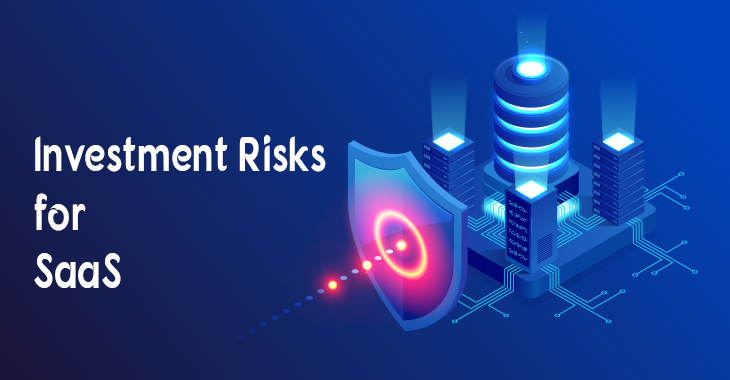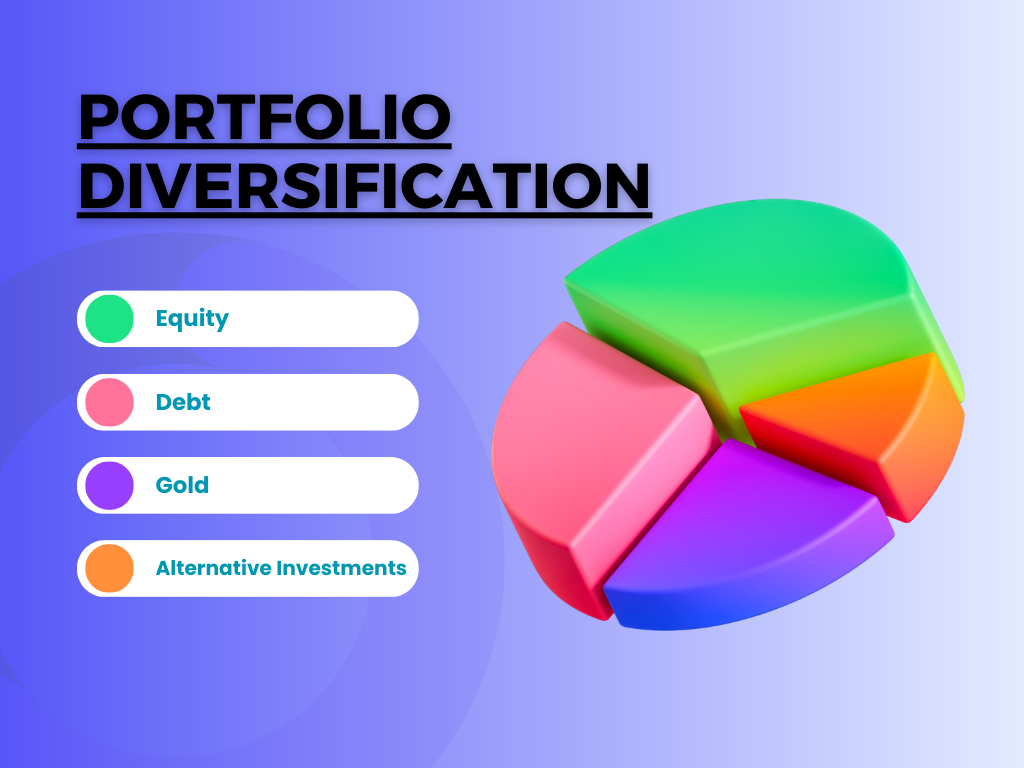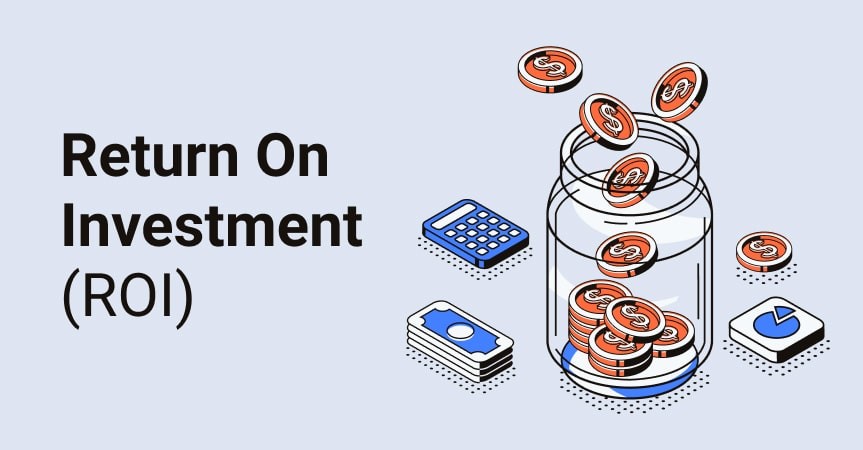Investment risks for SaaS can seem like an intimidating hurdle, particularly when you’re new to the realm of software as a service investing.
It’s not rare to hear investors complaining about the unsteadiness of SaaS investments while browsing through financial news sites and investment forums.
“You need experience to make wise SaaS investments but you can’t gain that experience without making some risky moves first.” This isn’t necessarily true. There are many who have successfully navigated the world of SaaS investing with minimal prior exposure.
The ever-evolving landscape of SaaS companies, coupled with technological advancements, is constantly creating fresh opportunities
The Investor’s Guide to SaaS Companies
Venturing into the SaaS realm can be a tantalizing prospect for investors. However, it requires understanding the unique challenges and dynamics of these companies. Investors often witness price volatility with their investments in Salesforce, Zoom, or other SaaS providers after earnings reports are released.
Dive into the world of successful SaaS investing.
As Benjamin Franklin once said, “An investment in knowledge pays the best interest.” Armed with this wisdom, let’s delve deeper into what makes a winning SaaS company.
What Makes a Successful SaaS Company?
A deep dive analysis reveals that investors typically seek certain qualities when evaluating potential opportunities within the SaaS environment. The most promising firms usually offer products solving real problems for users or services streamlining processes across industries.
Savvy founders possess insightful market intelligence coupled with a clear vision about the future trajectory of their enterprise – factors highlighted by McKinsey & Co., which found rapid growth crucial for survival among SaaS businesses.
- Analyze Key Metrics: When considering your next move as an investor, pay close attention to key metrics such as total user growth rate, customer acquisition cost (CAC), lifetime value/CAC ratio (LTV/CAC), monthly recurring revenue (MRR), and gross margin.
- Total User Growth Rate: This indicates increasing demand for the offered product/service.
- CAC: This measures marketing expenses incurred before acquiring each new client.
- LTV/CAC Ratio: A higher figure suggests better ROI since each acquired customer brings more value than associated acquisition costs.
- MRR shows reliable expected monthly revenue based on current subscription rates while high Gross Margin signifies healthy profitability levels indicating possible long-term sustainable
Dive into the world of SaaS investing. Understand price volatility, evaluate key metrics like user growth rate & CAC, and learn what makes a successful SaaS company. #InvestingInSaaS #KnowledgeIsPowerClick to Tweet
The High Failure Rate of SaaS Companies
Investing in Software as a Service (SaaS) firms can be hazardous, with an alarming 92% collapsing within their initial three years. This high failure rate is not random but rather due to several identifiable factors.
How to Avoid Common Pitfalls
Finding the right product-market fit:
SaaS businesses often stumble when they fail to align their offerings with market needs or wants. The absence of this crucial alignment can leave them struggling for traction amidst fierce competition in the industry.
Navigating cash flow issues:
Cash flow problems are another significant factor contributing towards SaaS failures. As highlighted by CB Insights report, running out of cash was cited as one of the top reasons why startups across sectors failed – and it’s no different for SaaS companies lacking adequate funding and financial management strategies.
Note: This section aims to educate readers about potential risks associated with investing in SaaS businesses based on historical data trends observed among failed startups within this sector. No investment advice is provided here; always conduct your own thorough research before making any investment decisions.
Battling customer churn rates:
A third pitfall that many SaaS providers encounter involves higher churn than growth rates – where more customers discontinue service than new ones signing up over time, which results in losses if left unchecked.
Mitigating Risks:
Avoiding these common pitfalls when considering investments or starting your own SaaS company requires robust strategic planning at every level—from product development through marketing sales down to after-sales services.
Understanding where others have gone wrong provides valuable lessons on best practices, such as establishing a clear vision and solving real-world problems using unique insights from founders. These practices can help secure longer client life cycles, leading to successful outcomes despite facing higher risk environments inherent within such ventures.
Key Takeaway:
Key Takeaway: SaaS investments are a high-stakes game with 92% of companies failing within three years due to misaligned product-market fit, cash flow issues, and customer churn. However, strategic planning at every level coupled with learning from past failures can pave the way for success despite these risks.
Navigating the Top Seven SaaS Security Risks
As SaaS applications become increasingly popular, organizations must be mindful of the security risks they present. These include misconfigurations, access management issues, regulatory compliance difficulties, data storage concerns, and threats of data breaches.
Misconfiguration: A Major Concern
A leading cause for many data breaches, misconfiguration can occur when users fail to properly set up their systems or overlook critical settings. It’s essential that all configurations are double-checked for accuracy and completeness.
The Shared Responsibility of Cloud Security
In any discourse regarding cloud security in a SaaS context, it is apparent that both service providers and customers have responsibilities. However, this view doesn’t take into account user behavior, which plays an integral part in maintaining secure environments.
SaaS providers should ensure they offer robust infrastructure protection, including firewalls and intrusion detection systems, while also providing regular updates and patches for software vulnerabilities. On the other hand, clients must be diligent in setting strong passwords, managing user permissions appropriately, ensuring secure connections when accessing services remotely, among other practices. In fact, according to The Hacker News, 52% of respondents believed responsibility was solely on the provider, but reality is much different indeed.
Data Storage & Compliance Difficulties – Not Just Technicalities.
Data storage often poses additional risks, especially if encryption isn’t used correctly during transmission or at rest times, potentially exposing sensitive information. Scenarios where hackers could exploit weaknesses and retrieve such details without authorization procedures being triggered off first, thereby causing serious damage both financially and reputationally. Speaking of terms, aspects involved here are so much more than just mere technicalities. Rather, they involve legal implications as well. Hence, why regulatory compliance comes into the picture crucially. It is a vital aspect to consider carefully before opting for any particular solution available in the market. In today’s digital age world we live in, days gone past are not anymore. Remember, investment decisions made today will impact future business operations greatly. Consequently, to ensure success it is essential that decisions are made after careful consideration of any potential drawbacks. Else, risk becoming another statistic in the failure
Key Takeaway:
Investing in SaaS businesses isn’t a walk in the park. Misconfigurations, data storage issues, and compliance difficulties are just some of the potential potholes. Remember, both providers and customers share responsibility for cloud security – it’s not all on one party. Make smart choices today to avoid becoming tomorrow’s cautionary tale.
Overcoming Security Risks with Robust Measures
The landscape of SaaS security risks can be a minefield. However, the key to navigating it successfully lies in implementing robust measures that are comprehensive and proactive.
It’s time for Risk Assessments: A Proactive Approach
A famous quote by Benjamin Franklin goes, “If you fail to plan, you plan to fail.” This rings especially true when addressing SaaS security issues within your organization.
Risk assessments serve as an essential tool in this planning process. Regularly conducted evaluations help identify potential vulnerabilities before they become exploitable weak points. They also provide valuable insights into effective solutions tailored specifically for these identified weaknesses.
Promoting Security Awareness Among Users
This adage holds particularly true when discussing cybersecurity within any SaaS environment. Creating awareness among users about common cyber threats such as phishing attacks or malware is vital. This involves designing training programs focused on teaching staff members how to recognize suspicious activity online along with best practices like secure password creation and management.
In addition, organizations should consider policies encouraging responsible behavior while using company resources online, which could include restrictions on certain website access or enforcing two-factor authentication methods during login processes.
Finding Value in a Comprehensive SaaS Security Checklist
A well-structured checklist serves as an invaluable guide through the labyrinth of SaaS security concerns.
- Data encryption: All data at rest (stored) and in transit (during transmission) needs encryption using strong algorithms.
- User Access Control: Strict user access control protocols ensuring only authorized individuals have access must be implemented.
- Multifactor Authentication: Account protection strength increases significantly by requiring more than one method of verification from independent categories.
Following such guidelines helps businesses build safer environments leveraging the power of cloud-based solutions while mitigating higher risk factors associated with them.
Key Takeaway:
Navigating the minefield of SaaS investment risks requires robust security measures, proactive risk assessments, user awareness training, and a comprehensive checklist. It’s all about planning ahead to dodge cyber threats and ensuring safe sailing in the cloud-based solution sea.
Investing Wisely in SaaS Businesses
In the realm of investing, SaaS companies present a unique opportunity. However, to navigate this landscape successfully, it requires an understanding of their distinct characteristics and common risks.
Growth is Key
A McKinsey report has highlighted that rapid growth significantly reduces a SaaS company’s risk of failure. Thus, as an investor or entrepreneur interested in these businesses, it becomes crucial to evaluate metrics such as customer acquisition costs (CAC), churn rates, and lifetime value (LTV) against CAC.
Beyond financial indicators, though, lies another critical factor – product-market fit. A successful SaaS business solves real problems for its users, which increases its chances for success exponentially compared to those not meeting market needs effectively.
Security Risks Assessment
SaaS security issues represent one significant area investors need to pay attention to. Security threats like data breaches and misconfigurations pose serious challenges within the SaaS environment, hence it is important to assess how well-prepared prospective investment targets are in addressing these threats by reviewing measures such as access management systems and disaster recovery plans.
To gauge effectiveness, you might want to reference resources similar to Gartner’s comprehensive SaaS security checklist. This provides insight into whether they have robust protocols in place to protect both themselves, clients, and potential cyberattacks and data loss incidents.
Navigating Compliance Challenges
The regulatory compliance requirements faced by many organizations using SaaS applications are also worth considering when making investment decisions. Non-compliance could result in hefty fines and penalties that would ultimately impact your returns on investment.
Hence, assessing adherence to policies and procedures becomes an integral part of the due diligence process before committing any funds into such ventures.
Data Privacy Concerns
Given the digital age and vast amounts of sensitive data stored online, secure server infrastructure with strong encryption methods are key to ensuring a chosen target’s compliance.
Strong encryption methods and secure server infrastructure, among other things, are essential in ensuring that chosen targets demonstrate a
Key Takeaway:
When investing in SaaS businesses, understanding growth metrics and product-market fit is vital. Keep a keen eye on security measures against data breaches and compliance with regulatory requirements. Lastly, ensure robust privacy protocols are in place to protect sensitive information.
Conclusion
Investing in SaaS businesses can be a thrilling ride.
Yet, this journey is not without its share of challenges and potential risks.
Investment risks for SaaS
We’ve unraveled the layers of investment risks for SaaS companies, shedding light on common pitfalls and security concerns.
The high failure rate within the first three years is a sobering reality check.
Cash flow problems, failing to establish product-market fit – these are just some reasons behind this statistic.
Then there’s the issue of cloud security with misconfigurations and access management issues topping the list.
Data privacy concerns also loom large in this digital age where information is gold.
Navigating through these challenges requires robust measures like risk assessments and disaster recovery plans.
A strict adherence to regulatory compliance can save you from hefty fines too!
All said and done, understanding these complexities helps make informed decisions when investing in SaaS businesses.
Your journey towards successful investments begins here! Let’s embark on it together!
If you want to learn more about this, sign up for my newsletter.


